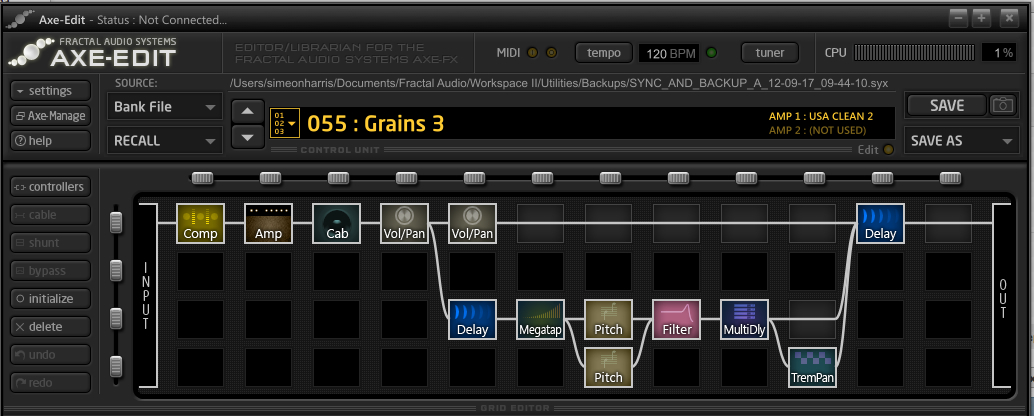yek
Contact Fractal for your Custom Title
I got a few questions via PM about configuring fx blocks in parallel rows.
First: here's a Wiki page on this topic. And here's a Wicked Wiki edition about parallel paths.
The picture below demonstrates how using multiple blocks in a column can save space on the grid. No need to extend the chain by using Feedback Send/Return (saves some CPU).
Another advantage of blocks in parallel rows is that it's much easier to maintain a consistent volume level when switching effects on/off.
In this example Wah and Pitch are placed in one column to be able to use a single exp. pedal for both effects (alternating between these fx).

You can use MFC-101 features such as Switch Links to alternate between effects.
Preset: http://members.ziggo.nl/alexandervanengelen/demo_preset.syx
First: here's a Wiki page on this topic. And here's a Wicked Wiki edition about parallel paths.
The picture below demonstrates how using multiple blocks in a column can save space on the grid. No need to extend the chain by using Feedback Send/Return (saves some CPU).
Another advantage of blocks in parallel rows is that it's much easier to maintain a consistent volume level when switching effects on/off.
In this example Wah and Pitch are placed in one column to be able to use a single exp. pedal for both effects (alternating between these fx).

You can use MFC-101 features such as Switch Links to alternate between effects.
Preset: http://members.ziggo.nl/alexandervanengelen/demo_preset.syx
Last edited:

